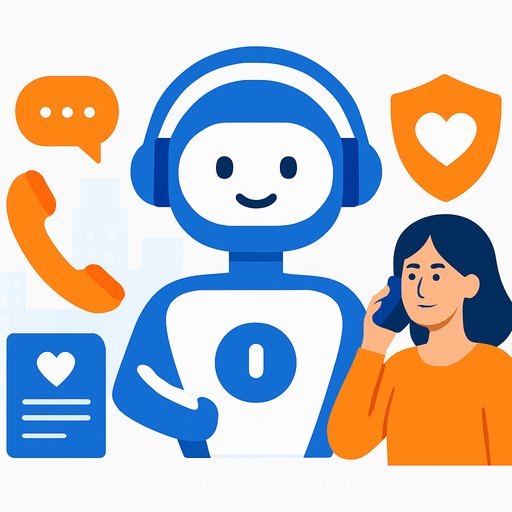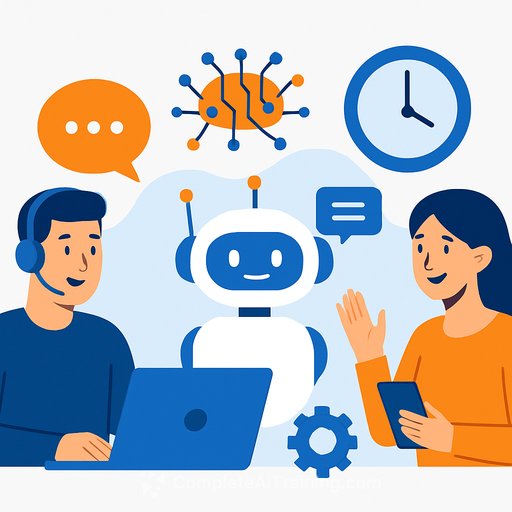Instant resolution and self-service: practical AI for modern customer support
Customers expect answers now, not "within 16 business hours." Human empathy still wins complex situations, but a large slice of tickets can be handled by knowledge at first contact. That's where instant resolution and AI-enabled self-service come in. SAP is launching these tools as the first step in a broader, agentic case resolution workflow to make support smarter and more proactive.
What instant resolution looks like on day one
A user submits a routine ticket about a known error during an update. Instead of sitting in a queue, they get an immediate response from a trained AI agent with a direct link to a relevant SAP Note or SAP Knowledge Base Article. It's accurate, contextual, and fast. Ticket volume drops, and engineers get time back for high-priority work.
Another common case: a user uploads logs after hitting a defect. A smart log analyzer reviews the data, flags the root cause, and replies with the fix. That's near-instant diagnostics with zero escalation and no back-and-forth.
The benefits are straightforward: faster answers, fewer escalations, fewer handoffs, and less productivity loss for customers. It's the front door to a more capable support system.
What the data says
Agentic AI shifts support from reactive to action-oriented. SAP's Auto Response Agent currently delivers highly relevant answers with an 80% confidence rate, so customers receive solutions only when the system is sure enough to help. That protects time on both sides.
First contact resolution (FCR) matters because it ends the case in one interaction. The FCR rate for auto-answered cases is 40%-on par with human-assisted interactions-which signals reliable quality. For a quick reference on FCR as a KPI, see this overview from ICMI: What is First Call Resolution?
Self-service is doing the heavy lifting as well. With AI integrated, SAP resolves issues instantly about four out of five times and addresses over 82% of issues via self-service. Structured knowledge and content make high-confidence automation possible.
How support teams can put this to work
- Gate automation by confidence. Auto-reply when confidence is high; route to humans when it drops.
- Curate a clean knowledge base. Use versioned, structured content (KBAs, Notes) so AI can match fixes precisely.
- Instrument outcomes. Track FCR, time-to-resolution, deflection, and CSAT. Review low-confidence and escalated cases weekly.
- Automate diagnostics. Accept logs and telemetry, then run pattern checks to surface likely root causes with links to fixes.
- Design clear handoffs. Show the user what was checked, why the answer is suggested, and how to reach an expert if needed.
- Keep humans on high-impact work. Complex issues, edge cases, preventive insights, and empathy-driven conversations.
Implementation checklist
- Map your top contact drivers and known errors.
- Connect knowledge sources (Notes, KBAs, runbooks) and tag by product, version, and symptom.
- Define confidence bands and response policies (auto-answer, suggested answer, or human handoff).
- Pilot in shadow mode, compare outcomes, and tune prompts and content gaps before go-live.
- Stand up dashboards for quality, safety, and drift monitoring.
- Close the loop: feed resolved cases back into knowledge to raise future confidence.
Self-service that people actually use
Old self-service meant static FAQs and keyword hunts. AI changes that by surfacing the most relevant article, fix, or guided workflow based on context, behavior, and history. Customers get a conversational path to a fix-often before a ticket is needed. Fewer cases in the queue, faster outcomes for users.
Responsible by default
Automation should never get in the way of care. Auto response triggers only when confidence is high; cases that need hands-on support go to engineers and experts. The principle is simple: relevant, reliable, and responsible use of AI-no experiments on live customer problems.
The road ahead
The goal is a support system that runs faster, gets smarter over time, and feels more human because of how AI is used. By augmenting first-touch support with agentic AI, SAP sets a clear model for handling both simple and complex issues across enterprise support. Start with known issues, instrument everything, and let your knowledge work for you.
Want to upskill your team on practical AI for support workflows? Explore curated AI courses by role here: AI Courses by Job.
Your membership also unlocks:






